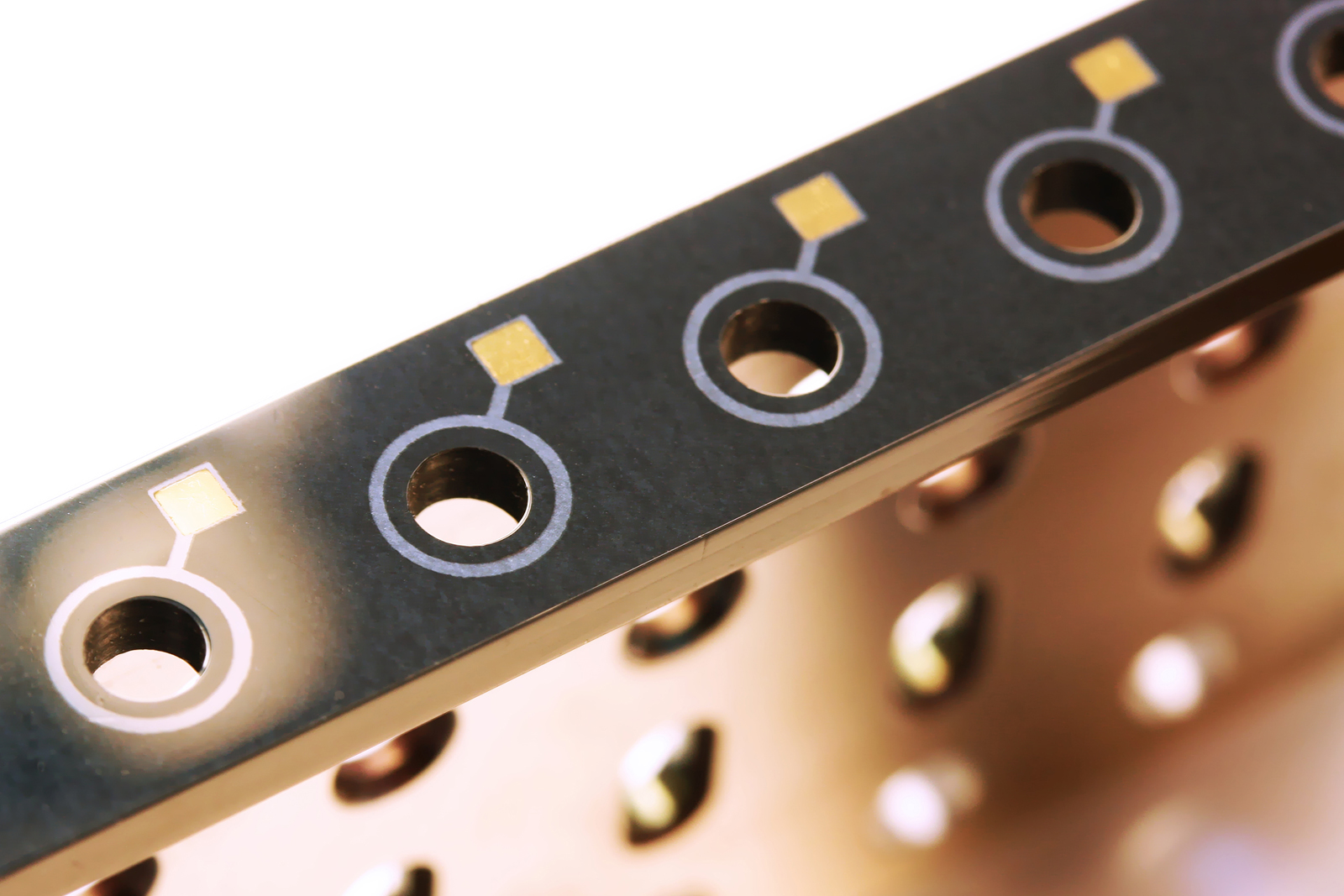The perfect connection between guitar and computer
Guitar virtuosos have to master all kinds of playing techniques. But how can the intricate process of playing the instrument be captured digitally? A special thin film on the tailpiece has the answer. Functioning as a sensor, it converts the tension on the string into digital control signals.
Rapidly, but expressively and with amazing ease, the guitarist’s fingers move over the strings on the neck of the instrument. His fingertips move up and down and a vibrato resonates. From the guitar a cable leads to a laptop, which records the virtuoso performance in minute detail. The computer registers each vibrato, each bend precisely and almost instantaneously. Afterwards the guitarist can play back the digital recording and process it on a computer.
The guitar incorporates a piece of Fraunhofer technology. Engineers at the Fraunhofer Institute for Surface Engineering and Thin Films IST have developed a sensor which translates complex guitar-playing movements into digital control signals. “This enables the different techniques such as vibrato and bending to be precisely captured,” explains Saskia Biehl, head of the micro and sensor technology group. The key element is a thin film bearing the name DiaForce®, which coats the tailpiece, the part of the instrument anchoring the guitar strings to the body.
DiaForce® is based on amorphous carbon and is piezoresistive. Biehl explains what this means: “When the player changes the string tension, the pressure on the film changes. This in turn leads to a change in resistance, which is measured by electrodes on the film.” To be able to record the string tension forces and therefore the various playing techniques accurately and with as little delay as possible, Biehl and her group have tested various coating parameters and contact materials. They achieved good results with a tailpiece coated with a ten-micrometer DiaForce® film. The intention is also to measure the strength of the string vibration, which would make it additionally possible to digitally represent the stroke strength and fading – regardless of whether the player plucks the strings with their fingers or a plectrum.
The development partner for this Fraunhofer technology is M3i Technologies GmbH. The company has already developed a laser-based sensor system which captures the pitch of chords and individual notes. A software program converts this data into digital control signals. DiaForce® supplements this development and makes it the perfect sensor system for guitar playing. The Fraunhofer research engineers now aim to develop suitable processes for mass producing the DiaForce® coating as a low-cost tension sensor for guitars. “We also want to extend its application to other musical instruments,“ says Biehl. “After all, force is exerted at various points on many string instruments, and so the possible applications are numerous.”
In the future, coated tailpieces could replace the pickups on electric guitars which convert the string vibration into an electrical signal to create the sound from an electric guitar. “The DiaForce® film will need to be particularly sensitive for this, which is what we are working on right now,” concludes Biehl.
